
How to Create a Resume in Microsoft Word (Step-by-Step Guide)
If this is your first time creating a resume in Microsoft Word, the process may seem overwhelming. Luckily, this article is here to help! In this step-by-step guide, we will cover how to create an effective resume from start to finish using Microsoft Word.
How Do I Make a Resume in Microsoft Word?
There are two primary methods for making a resume in Microsoft Word:
- From Scratch: This gives you the ultimate creative control. However, it also requires you to familiarize yourself with all of Microsoft Word’s tools and layout options. Building a resume from scratch can be more time-consuming but also more customizable.
- From a Template: Microsoft Word offers several pre-made resume templates. By using these, all the formatting and layout creation is handled for you. You simply have to fill in your own information.
To use a template, go to File > New and then select a template from the Resume and Cover Letter section.
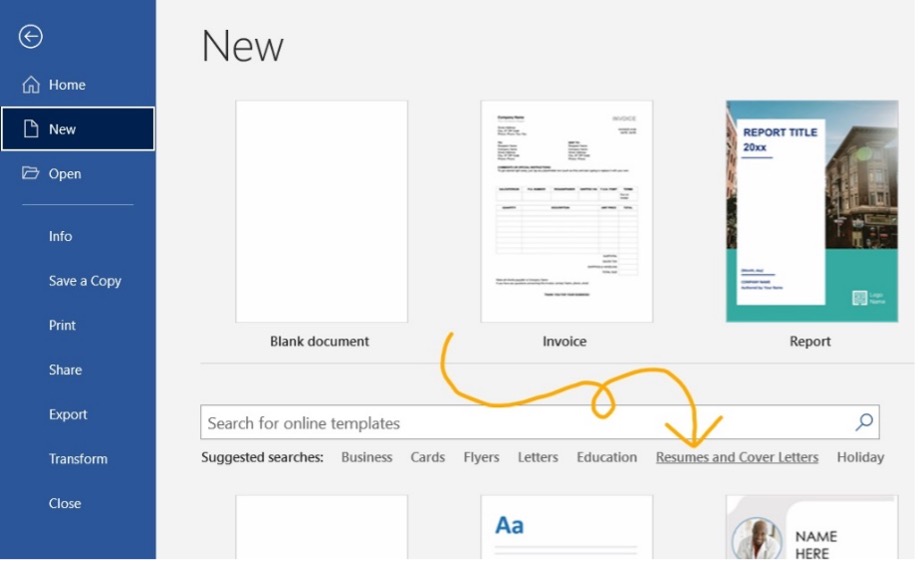
How Should I Format My Resume in Microsoft Word?
The format you choose will depend on your experience level!
There are 3 basic resume formats to choose between:
- Reverse-Chronological: Details your most recent job and works backwards from there. This format focuses heavily on work experience.
- Functional: Focuses on skills and education rather than work experience. This is a good option for recent graduates or applicants with minimal work experience.
- Hybrid/Combination: Combines elements of both the Reverse-Chronological and the Functional. This is a good option for applicants with gaps in their employment history.
Choosing the best format for your needs is key. For more help on this subject, check out our guide on How to Choose the Correct Resume Format in 2024 !
Beautiful resume templates to land your dream job

Make a Resume in Microsoft Word in 7 Easy Steps
First, let’s make sure you can navigate the Microsoft Word ribbon!
The ribbon is the toolbar found at the top of the screen.
It should look something like this:

The main parts of the ribbon you should familiarize yourself with on the Home tab are Font , Paragraph , and Styles .
These are how you will edit the appearance of your text and headers.
You should also familiarize yourself with the Layout tab .
This tab is where you will adjust your margins and add columns!
Once you have taken your time to figure out where all of your tools are, it’s time to begin building your resume!
Important Note: These steps detail how to create a resume in Microsoft Word from scratch. By using one of the program’s pre-made templates, you can bypass many of these steps and simply fill in the pre-made format.
Step 1: Create Your Layout
Let’s begin by visiting the Layout tab .
Here, you can set your margin size and decide if you want to use columns.
Here is a breakdown of these two elements:
We recommend using 1-inch margins on all sides.
This will give you enough white space to keep your resume looking neat without sacrificing too much space.
It will also ensure your formatting looks good on printed versions of your resume.
Columns and Sidebars:
From the columns tab, you will find five options:
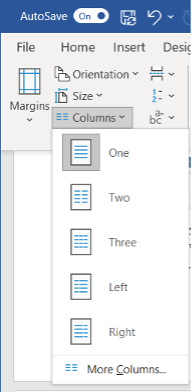
- The One , Two , and Three options are how you will create separate columns.
- The Left and Right options are how you will create sidebars! Sidebars are useful because they leave more room for the main text and sections.
From the Home tab , you can edit the following elements of your layout:
Alignment:
Choose between left, center, or right alignment.
We recommend using the left alignment.
Whichever you choose, it is a good idea to keep your alignment consistent across the board.
Line Spacing:
We recommend using 1.15 – 1.5 line spacing for the body text.
For section titles and headers, use 1.5 – 2.0 spacing to help them stand out from the rest of the text.
Use a simple and highly legible font. Try to use only 1-2 fonts throughout your resume.
We recommend the following seven fonts:
- Times New Roman
Step 2: Make Your Title Header
Your title header should contain the following information:
- Your Job Title
- Contact Information
- Professional Social Media Links
Use an H1 header to write your name at the very top.
Use the Normal style to write the rest of your information (see “How Do I Add Different Sections of the Resume on Microsoft Word” below for more information on header styles).
It should come out looking similar to this:
Copywriter Email: [email protected] Phone: (123) 456-7890 Website: Janesmith.com LinkedIn: linkedin.com/in/janesmith
Check out some of our free resume examples to see alternative ways of formatting your title header!
Step 3: Write an Objective or Summary
Following your title header will be your resume objective or summary.
This will be a short statement between 1-5 sentences detailing your desired job title, experience, and career goals.
You will want to write this statement in the Normal style .
However, you may want to use a slightly larger font than the rest of the text in other sections.
This will help your objective or summary statement to stand out.
Here is an example of how this might look with the title header example from before:
Resume Objective: I am a copywriter with over 5 years of experience. working with corporate clients. I am seeking the position of Head Copywriter at your company, bringing with me over 10 major corporate clients.

Step 4: Create Your Base Format
By creating a base format, you can save the document as a separate file to return to and fill in again and again.
This will help you to tailor your resume to fit specific jobs!
The idea of the base format is to provide outlined sections with the correct spacing and number of bullet points.
You are essentially creating a skeleton for your resume that you can edit and adjust over time.
By doing so, you ensure you have already allocated the proper amount of space on the resume for each section.
For example, this is what your base Work Experience section may look like:
Work Experience
Job Title 1 , Company Name Date – Date · Descriptive Sentence · Descriptive Sentence · Descriptive Sentence Job Title 2 , Company Name Date – Date · Descriptive Sentence · Descriptive Sentence · Descriptive Sentence Job Title 3 , Company Name Date – Date · Descriptive Sentence · Descriptive Sentence · Descriptive Sentence
As you gain more work experience, you can return to this base format and make changes as need be.
Because you have already outlined the section, you won’t have to worry about reformatting the entire resume to make a few simple changes.
Step 5: Determine Your Section Organization
Once you have built the base format of your resume, it’s time to determine if your sections are in the optimal location.
For instance, if you are creating a Reverse-Chronological style resume you will want your Work Experience section to come first.
Comparatively, if you are creating a Functional style resume you may want your Skills or Education section to come first.
The order and organization of your sections will impact the impression your resume makes on hiring managers.
Step 6: Fill in the Information
Now that you have created the base format of your resume and chosen the optimal organization, it’s time to fill in your information!
When filling in your information, be mindful of the following 3 factors:
- Be Concise: Always use simple sentences that clearly describe your strengths and accomplishments. Avoid complex sentences or overly complicated vocabulary and jargon.
- Use Bullet-Points: In each section, use bullet points to separate each thought or idea. This will make your resume more visually appealing and easier to read.
- Choose Compelling Language: Try to avoid repeating the same words or phrases over and over. Mix it up, use keywords, and find the best action verbs to make your resume sound even better!
Not sure how to make your language more compelling on your resume? Take a look at our list of 350+ Action Verbs to Make Your Resume More Effective in 2024 .
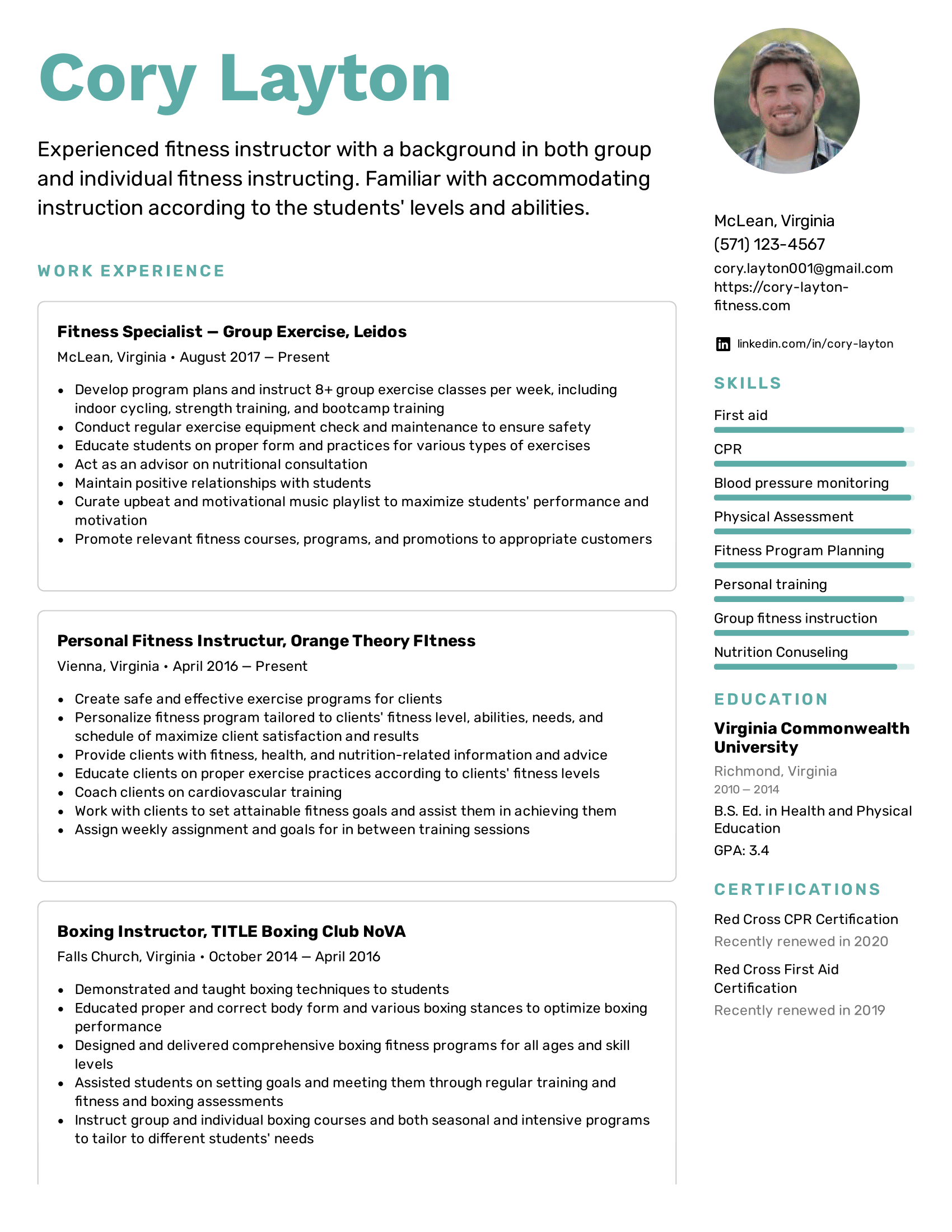
Step 7: Double-Check Your Sections
Once you have completed steps 1-6, look back over your resume and make sure you have included all of the key sections.
You should also take some time to consider what additional sections you could include.
Here are the key sections every resume should have:
- A title header with your name and contact information
- An objective or summary statement
- Work experience
As we have covered, the order of these sections will vary depending on the format you have chosen.
However, each of these sections should always be included in your resume.
There are also some additional sections to consider adding.
Here is a quick list of extra sections that can add some extra flair to your resume:
- Awards and achievements
- Certifications
- Unpaid experiences, such as volunteer work or internships
- Relevant hobbies
How Do I Add Different Sections to a Resume on Microsoft Word?
The way to create different sections on your resume comes in two parts:
- Use an H2 header to create the section titles (Work Experience, Education, Skills, etc.)
- Use the Normal style to create the body of text below the H2 header
Here is a breakdown of how to use the H1, H2, H3, and Normal styles within your resume:
Select the Styles window from the Home tab .
From here, you will have options to create headers.
Your heading options are as follows:
- Heading 1: Use this heading as your largest title. This is what you will use to write your name at the top of the page. Use a bolded font between 16 to 20 pt in size. Use 1.5 to 2.0 line spacing to help the title heading stand out.
- Heading 2: Use this heading to create your section titles. Use a bolded font size between 14 to 16 pt. in size. Make sure these headings are smaller than your title heading. Use 1.5 to 2.0 line spacing to help these headings stand out from the rest of the text.
- Heading 3: Use this heading to create your job titles. Your job titles should be only slightly bigger than the rest of the text. Use a bolded font between 12 to 14 pt. in size. Use between 1.15 to 1.5 line spacing.
- Normal: Use the Normal style to create the body text underneath the heading. Use a regular font between 11 – 12 pt. in size. Use between 1.15 to 1.5 line spacing.
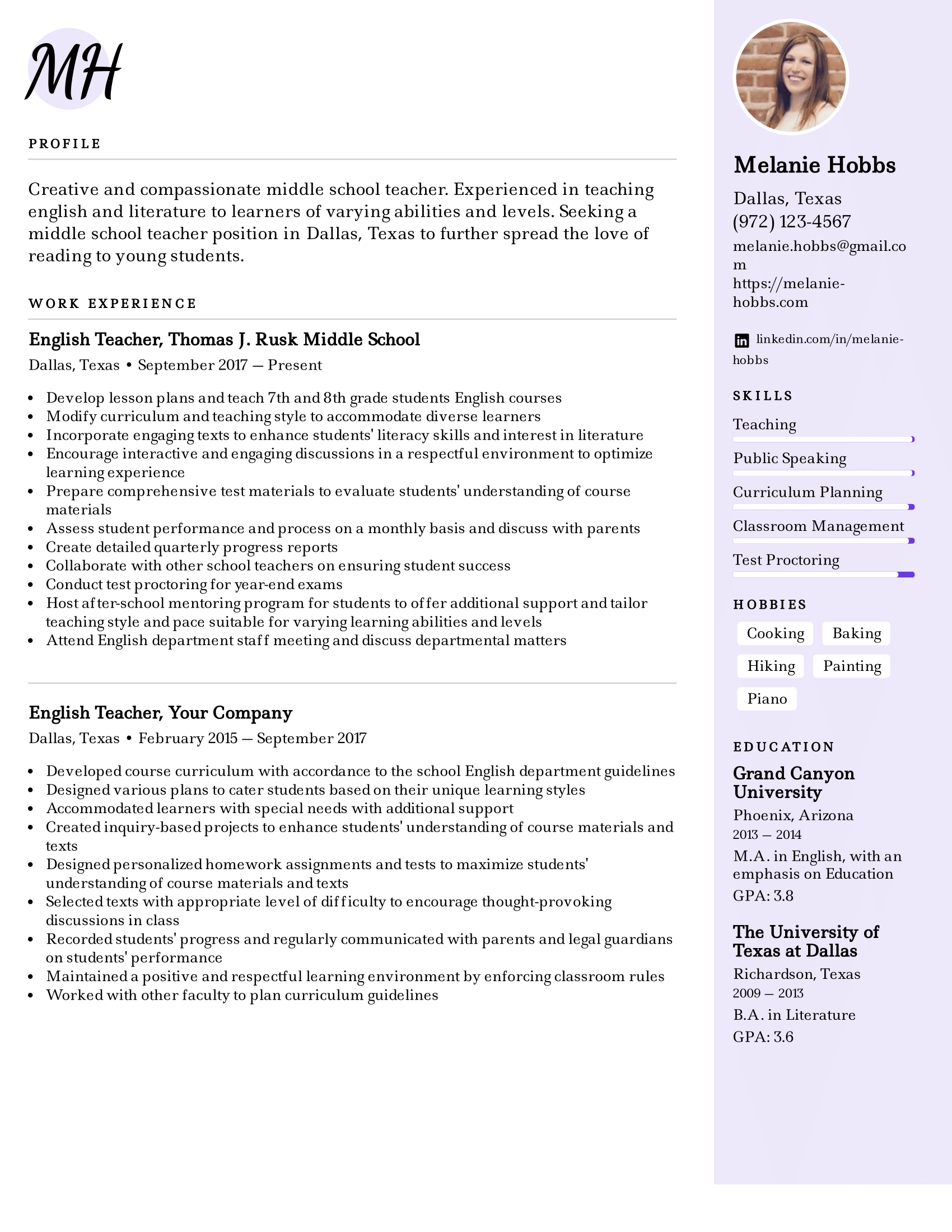
What are the Pros and Cons of Using Microsoft Word to Craft Your Resume?
Microsoft Word is a handy tool to have, especially if your computer comes with the program pre-installed.
Here are 3 pros and 3 cons to using Microsoft Word to create your resume:
- Total Creative Control: When creating a resume on Microsoft Word directly from your computer, you have total control over the design and format.
- More ATS Friendly: Applicant Tracking Systems are designed to read .doc files, the file format used by Microsoft Word.
- Can be Edited by Recruiters: If you are using a recruitment agency, a Microsoft Word file can be easy to edit by recruiters before sending it off to employers.
- The Microsoft Word Learning Curve: If you are unfamiliar with Microsoft Word, there can be a pretty steep learning curve that can cause you frustration.
- Time Consuming: Building a resume from scratch can be highly beneficial, but also highly time-consuming. This can become problematic if you need to create a resume quickly.
- Temperamental Templates: Microsoft Word offers tons of free resume templates. On the surface, this is super useful. However, these templates can be tricky to use. One wrong move can mess up the formatting in a big way and be an even bigger headache to try and fix.
Why Should I Use an Online Resume Template or Resume Builder?
By using a resume template from an online provider, such as Easy Resume, you are more likely to find a template that fits your exact needs.
Plus, online resume templates and resume builders often have more design elements that are easier to use compared to Microsoft Word.
Are you interested in using our online templates or resume builder? Check out our beautifully designed resume templates to build your optimal resume!
Final Takeaways
Microsoft Word offers a lot of capabilities to help you build your ideal resume.
Here are five key takeaways for creating a resume on the program:
- Create a base skeleton for your resume that you can use again and again for different jobs.
- Use different heading styles to help your resume title and section titles to stand out.
- Use the column tool under the Layout tab to create sidebars. Sidebars are great for smaller sections, such as certifications or awards!
- Always use concise and compelling language.
- Consider using a template to build your resume faster.
At Easy Resume, we have designed our resume templates and online resume builder to fit your needs. No matter your level of experience or skill at making resumes, we have the tools to help.
Don’t forget to check out our expansive collection of FREE resume guides and examples while you’re here!
Browse more resume templates that fit your role

Ed is a co-founder of Easy Resume. His background in scaling teams at tech startups over the last decade has given him extensive experience and knowledge around how to hire top talent and build successful teams. He enjoys mentoring, coaching, and helping others reach their career goals. When he's not writing about career-related advice, he's playing with his dog, Lilo, or going on long hikes in upstate New York.
Get inspired with more resume examples
More advice that will accelerate your career path, 15+ key healthcare skills to list on your resume in 2024 (with examples).
Healthcare is a massive and important industry that contains all sorts of professionals. To land a job in healthcare, you must understand what relevant skills employers are searching for. In this guide, we will cover key healthcare skills to include on your resume and why doing so is so important.
15+ IT Skills to List on Your Resume in 2024 (With Examples)
IT is a massively growing industry with tons of potential for professional growth. It’s no wonder why so many applicants are flocking to these jobs! In this guide, we will cover what IT skills are and offer you examples of some of the top skills to include on your resume.
50+ Key Technical Skills to List on Your Resume in 2024 (With Examples)
Including technical skills on a resume is an absolute necessity. These types of skills show employers your quantifiable qualifications. In this guide, we will cover exactly what a technical skill is and some of the best examples to include on a resume.
20+ Key Computer Skills to List on Your Resume in 2024 (With Examples)
With the world becoming more digitally focused, having strong computer skills is more important than ever. In this guide, we will cover what computer skills are and which ones are best to include on your resume.
Read our how-to guides on making your resume perfect
How to write a resume header.
Your resume header is the very first thing an employer will see. Not only does it need to contain the correct information, but it needs to stand out as well! In this guide, we will teach you how to write the ideal header for your resume.
How to Write Your Resume in Reverse-Chronological Order
When setting out to write the perfect resume, choosing a format is an important decision. Reverse-chronological resumes are the standard format, so knowing how to craft one is key! This guide will teach you how to write the best reverse chronological resumes.
How to List Contact Information on Your Resume in 2024
Learn how to format contact information on your resume and what information to share with the hiring manager.
How to Write a Two-Page Resume (with Examples & Tips)
Don't know whether you should write a one-page or two-page resume? Find out when it is appropriate to write a two-page resume and learn how to write it correctly.
Professional resume templates to help land your next dream job.
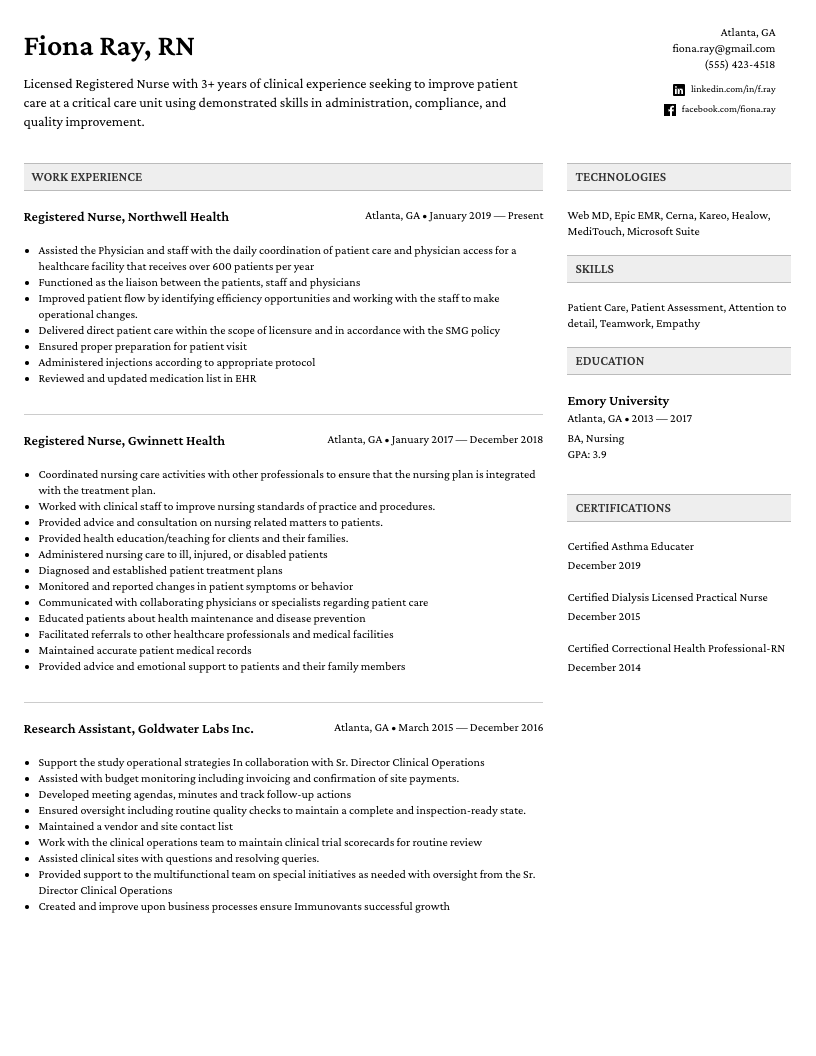
Facebook • Twitter • Linkedin • Pinterest • Crunchbase
How-To Geek
How to create a professional résumé in microsoft word.

Your changes have been saved
Email is sent
Email has already been sent
Please verify your email address.
You’ve reached your account maximum for followed topics.
Quick Links
What is a résumé, using a microsoft word résumé template, crafting a custom résumé in microsoft word, deciding what information to include, organizing that information.
Pressing the send button when sending your résumé to a potential employer can be a nerve-racking experience. We're here to show you how to create a résumé using Microsoft Word and provide a few tips on getting you through the résumé screening process so you can press that send button with confidence.
A résumé, often referred to as a CV (curriculum vitae), is a summary of a person's background and experience, including work experience, education, and even volunteer work, and its most common use is to send to potential employers when searching for a new career opportunity. In fact, though taking on a much different form than that of what you'd expect a résumé to look like today, Leonardo Da Vinci even did this himself, and he is often given credit as the first person to create a resume.
Of course, the résumé has undergone quite the transformation since Da Vinci's 1482 version, drastically so during the age of word processors and digital typesetting in the 1970's---40 years after résumés became an institution. Fast-forward to today and not only do you have your standard .doc or .pdf résumé, but you'll also see people uploading video résumés on YouTube and using social media platforms like LinkedIn to sell themselves to companies.
We should be thankful for these developments because now we can skip the quill and ink and jump straight into Microsoft Word.
Microsoft Word offers a bunch of résumé templates. Some are beautiful; some are not. We'll let you decide which style fits you best, but here's where you can find them.
Go ahead and open Word. As soon as you do, you'll be greeted with several different templates to choose from, ranging from a simple blank document, cover letters, résumés, or even seasonal event flyers. Click the "Resumes and Cover Letters" link under the search box to see only those types of templates.
Now, you'll see all the different resume styles Word has to offer. There are a lot of different styles and color schemes to choose one, so pick what feels right. If you scroll down the list a bit, you'll also see some plainer resume templates designed for different purposes---like an entry-level, chronological, or extended CV style.
Some of the templates are already built into Word; others are a quick, free download from Office.com (and you won't even have to leave Word to grab them). When you click to create a resume, Word will let you know the download size (if it needs to download the template). Click the "Create" button and a few seconds later, you'll be in your document and ready to edit.
That's all there is to it! But what if you didn't find a résumé you liked? Luckily, Word has a few formatting tools to help you craft the perfect résumé.
Before we start, it's important to know that each résumé should reflect a person's personal experience and education. Since everyone's experience is different, it's no surprise that their résumés will be too.
That being said, there are some general aesthetic guidelines for making a résumé that we highly recommend you follow for a professional-looking document .
Go ahead and open up a clean, blank document in Word.
The first thing we'll want to do is set our margins. Go to the "Layout" tab and click the "Margins" buttons.
The drop-down menu displays several different margin options from which to choose. If you can't find the one you're looking for, you can click "Custom Margins" at the bottom and enter your specifications. Let's go ahead and do that.
According to the experts, the best margin size is 1" for the top and bottom and 0.63" for the sides. This may seem like an oddly specific number, but the objective is to get as much (relevant) information about yourself as possible on a page without overwhelming the reader. With the above credentials, we leave enough white space on the page for the reader to not feel suffocated.
Click "OK" once you've entered the margin sizes you want.
Now that our margins are set, it's time to start inputting information.
The information you put mainly depends on what you're trying to accomplish and where you are in your professional career. If you have over two years of working experience, then detailing that information is much more valuable than which high school you graduated from or which clubs you were a part of in college. Like a cover letter, your résumé should uniquely cater to the recipient. Dress to impress.
So, which information should you put? We'll give you the overview, and you can decide which areas you should detail.
- Contact Information
- Professional Experience (It's also ok to include any volunteer work at the bottom of this section)
- Additional Skills
For all of these, tailor the information to the job. You don't need to fit irrelevant work experience in there unless not including it would create a gap in your work experience. But if you're applying for a job as an accountant, nobody cares that you delivered pizzas 12 years ago. And you do list out any additional skills, make sure they're relevant to the position for which you're applying. Your high school friend might be impressed by how high you can kick, but your future employer---not so much.
Another thing to remember is that you should always list out your experience in reverse chronological order. That is, list out your most recent experience first, and go back from there.
There're several ways to do this, but arguably the most effective way is by creating headings and then inserting a table for the content of each section. By doing so, you're not only able to move content around in groups instead of individually, which can be a headache in itself, but you're also able to give your résumé a unique touch by adding table designs. In the image below, for example, we've added a dashed border to the left side of the table to create a nice little visual element to tie the different experience elements together.
First things first, let's go ahead and find a heading that we like. In the "Styles" section of the "Home" tab, you'll find several default styles. If you can't find one you like, then Word has a feature that lets you create your own. First, click the "More" arrow on the right-hand side of the different built-in styles.
You'll see a menu with three different options. Go ahead and click "Create a Style."
The "Create New Style from Formatting" window will appear. The only thing you can do here is to name the style, so click "Modify."
Now you should see a window with many formatting options. For fonts, there's no best option. Just make sure you use something that's clean and readable. "Georgia" is a great example. A 14 pt font size is fine for headings, but make sure it's bold so that each section is easier to find for the reader.
The "Add to the Styles gallery" option will automatically be selected. It's good to leave this option selected so you'll have easy access to your heading for the other sections of your résumé. If you plan to use this heading again in future documents, you can go ahead and deselect "Only in this document," but since we only plan to use it for our résumé, we'll keep that option selected.
Click "OK."
Go ahead and type in your first heading and apply the new style to it. In this example, we'll use "Experience" first.
Now, let's use a table under our first heading so that we can keep all our content lined up correctly. Place your insertion point on the line under your new heading, switch to the "Insert" tab, and click the "Table" button.
You'll see a 10x8 grid on the drop-down menu. You can create the table size by moving your mouse over the grid and clicking when it's the size you want. For your résumé, you'll need one column and enough rows to contain the separate pieces of information you have to list. For example, if you have three prior jobs to list in the Experience section, you'll want a table that's 1x3.
And here's what it looks like after we've inserted the table into the document.
We'll remove the border lines later. First, go ahead and put in your information. You'll want the "Job Title, Company" text to be 1 or 2 pts larger than the rest of the text but be sure to keep it smaller than the heading of the section. If you want your job title to stand out, you can change the color or make it italic, but try to keep it simple.
Once that's ready, let's go ahead change the borders of our table. Select the table by placing your insertion point anywhere inside it. Switch to the "Design" tab in the "Table Tools" section of the Ribbon, and then click the "Borders" button.
If you want to keep it simple and remove all the lines of your table, select "No Border." In this example, we're going to give our table a little flavor, so we'll select "Borders and Shading."
Because we only want to customize the left border of our table, we will select "Custom" under the "Setting" section. This lets us use the "Preview" section to deselect the sides on which we don't want borders. Click the boxes surrounding the preview to turn off all the borders except for the left one.
In the "Style" list, you can select the border design, color, and width you want. Click "OK" when you're ready.
Now we should have an experience section on our résumé that's starting to shape up. A little playing with colors and maybe spacing the table rows a bit, and you should be ready to go.
Now, just repeat these steps for the rest of the sections and your professional résumé will be finished in no time!
Image Credit: fizkes /Shutterstock
- Microsoft Office
- Microsoft Word
How to Make a Word Resume in 2024 - 7 Easy Steps

At some point or another - meaning, before online resume builders made our lives easier - most of us have had to make a resume in Word.
Now, making a resume in Word can be tiresome. Not being entirely optimized for the task, it can give you a hard time formatting and styling your resume to your needs - and this is just one of its disadvantages.
That being said, the use of Word is unlikely to drop only because it’s impractical. This means that knowing how to make a resume in Word is still a good skill to have. And if you’re sitting and thinking: “well, this doesn’t make matters any easier” - we hear you.
That’s exactly why this article is here - to teach you how to make a resume in Word, in just a few easy steps.
- Should You Make a Resume in Word?
- How to Make a Resume in Word in 7 Easy Steps
- How to Format your Resume - 3 Pro Formatting Tips
But before we dive into the nitty-gritty details of how to make a resume in Word, let’s go through the downsides of using it to build your resume, and what other easier alternatives you might have in more detail.
Should You Make a Resume in Word?
Microsoft Word might once have been a top resume-building option, but that time is long gone. Although it has ready-made templates, Word in itself was never meant to be a resume builder - this reflects on the end product, which often looks old-fashioned and dull.
Not to mention that it offers very little space for creativity. Try to make a small change in the layout and see the format crumble in front of your eyes.
On the other hand, if you simply use the Word template without customizing it, yours might just become another resume in the crowd that won’t even pass the Applicant Tracking System (ATS) - the software most companies use to filter through countless resumes they receive daily.
Long story short, here are MS Word’s main cons as a resume builder:
Long story short, here are MS Word’s main cons as a resume builder:
- It can be clunky and outdated - chances are, any Word template you choose to use for your resume will look old-fashioned. Technology has changed what is expected of your resume, just as it has changed job-search over the last decade.
- It is not ATS-optimized - the software that most recruiters use not to waste time looking at the resumes? Well, most Word templates are not optimized for it. This means that you can be the fittest candidate for the job and not even get invited to an interview.
- It’s time-consuming - making changes to the layout of a Word resume template is a nightmare.
Everyone knows what happens when you move an image in Word:
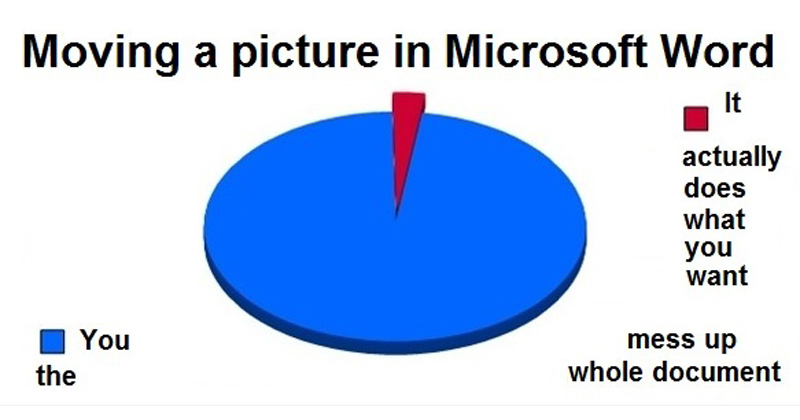
It’s exactly for these reasons, as well as the added efficiency, originality, and time preservation, that online resume builders are the obvious choice for creating your resume.
Novorésumé’s online resume builder is fast, easy to use, and perfect if you want to land that interview. You can start building your resume immediately just by clicking on the link, or you can pick one of our free resume templates , according to your needs.
Step #1: Pick a Word Resume Template
The first step in making a resume in Word is accessing its free resume templates. How you access the templates may change depending on the Microsoft Word version you’re using, but what you ultimately need to do is the following:
Open Word.
Select one of the Resume templates Word suggests, or simply search for “resume” and you’ll find a bunch more.
Choose the resume template that best fits your qualifications and professional profile.
Click “Create.”
You’re good to go: the template should appear as a Word document ready to be filled with your personal information and all other relevant sections.
Step #2: Create a Resume Header
From this point on, things should be pretty easy to pick up.
Start filling up your resume from the top, which is where the resume header is located. Traditionally, the header should include the following information:
- First and last name
- Phone Number
- Location (Street Address, City, State)
You may notice the lack of optional information in this resume template, such as your professional job title , your LinkedIn URL , or social media links.
If you feel like that info will significantly improve your resume, look for a Word template that includes them, or manually add them to the template you’ve already chosen. We’ll go over some formatting techniques to improve your resume template later on in the article.
Step #3. Include a Resume Summary or Objective
Next, you need to describe your professional experience or professional goals (in case you lack the experience) through the resume summary or objective.
Write a resume summary or resume objective - depending on which one best fits your resume - and try to express yourself in a way that will keep the recruiter’s attention for more than the traditional 7 seconds .
Quick recap: a resume summary is a 2-3 sentence overview of your career and is used in 90% of the cases. A resume objective is more commonly used among those with little professional experience or those who are changing careers and describes your professional goals.
Step #4: Create a Compelling Work Experience Section
This is where things get serious.
The work experience section is the most important part of your resume for obvious reasons and usually plays a decisive part in the recruiters’ decisions. So just filling up the gaps in the experience section of the Word template won’t be enough. You should try to make this section as compelling as possible - following some of the tips provided below.
But first, the basics. As with any standard format, the experience section should include the following components:
- Job title and position
- Company name and location
- Dates of employment
- Achievements and responsibilities
Again, how the resume looks in Word will depend on the template that you have chosen.
Obviously, the template lets you add as many professional entries as you wish - but that doesn’t mean you should go overboard. List your experience in reverse-chronological order, meaning: start from the latest and move back in time, based on the amount of professional experience you possess.
There are, of course, a couple of pro tips that you should follow even as you use the Word templates to make your experience section more compelling.
Pro Tip #1 - List achievements over responsibilities
Notice the example above.
Instead of responsibilities, we have opted to list achievements. Listing achievements over responsibilities whenever possible is one of the best ways to stand out in the eyes of recruiters. That’s because responsibilities are similar for one type of job, while achievements show exactly what you can contribute to the position .
Pro Tip #2 - Tailor your resume to the job you are applying for.
Another good practice is tailoring your resume to the job you are applying for. This can help you go through the ATS and land your resume right on the recruiters’ tables.
If you want to know exactly what information to include in your resume, how and when to list achievements over responsibilities, and how to tailor your resume to your job, head over to our complete guide on how to write a resume .
Step #5: Add Your Educational Background
Things should get quite easy after you get your professional experience section out of the way.
The education section of your resume should include the following:
- University name and location
- Years attended
- Program name / Degree obtained
Optionally, you can include your GPA, Minor degrees, or any special award or academic achievement. Our advice is to include them only if you are a recent graduate or entry-level professional with not much else to include in your resume, or if your education history is truly outstanding.
Step #6: Make Sure to Include Your Skills
At this point, you can consider most of the work done!
Now that you have reached the skills section, things get even easier. Make a bullet or numbered list of your hard and soft skills and you’re good to go.
Hard skills are usually measured through experience levels - you can place your experience level (usually categorized into Beginner/Intermediate/Advanced or Expert ) into brackets, so you don’t take up too much space within the resume.
Pro Tip #3 - Tailor the skills and qualifications on your resume to the job
Take a look at the essential skills required on the job ad and see if you can incorporate them into your list of skills.
Step #7: Include Optional Resume Sections
Congrats - you can finally stretch your legs and even allow yourself a little pat on the back.
The additional sections are not mandatory in a resume, so if you’ve reached your resume space limit, you can just call it a day and save your resume.
They are, however, a great way to show off additional assets such as languages, hobbies and interests, and even volunteering experience on your resume !
- Remember to also determine your language knowledge levels. Those are Native , Fluent , Proficient , Intermediate , and Basic.
In the off chance that you still have some space left - considering resumes should be 1-2 pages at most and that Word templates are not as good at saving space as online resume builders - you can include the following optional sections:
- Certifications and Awards
- Publications
Follow the same practice as with the skills section, and you’re good to go!
How to Format Your Word Resume
With all the essentials covered, let’s go over some formatting tips such as fonts, line spacing, and headings so that your Word resume looks as uniform and clean-cut as possible.
Best Resume Fonts in Word
We cannot repeat this enough - the resume font you use, matters. It matters just as much as first appearances matter and we all know they do, a lot.
The font that you decide to use will impact your resume readability whether you like it or not, so you should use a font that will help you stand out, but not in a bad way. What’s a bad way? Comic Sans and other similarly-looking comic fonts.
The usual Times New Roman, point-12, formula, on the other hand, will just blend you with the crowd.
Instead, consider using one of the following recruiter-friendly fonts which will complement your resume both on-screen and in printed form, according to Business News Daily :
- Book Antiqua
- Trebuchet MS
Optimal Line Spacing for a Word Resume
The good thing about the Word resume template is that it usually has fonts and line spacing covered for you, yet it’s still good to know that the best line spacing for resumes is 1 or 1.15 between text and double lines after headings.
Feel free, however, to play around with line spacing when it comes to adjusting your resume layout.
Headings in a Word Resume
Again, Word templates do a good job of making the headings stand out. As a rule of thumb - and as is noticeable in the above examples - headings should be bigger than the rest of the text. So, if you’re using a 12 pt text, consider adjusting the headings between 14-16 pt.
You can also underline or bold each resume section heading, or even use a different font, but as we always advise: don’t go overboard and try to maintain the style of the Word resume template that you have chosen.
And by now, you should have a complete resume in Word that looks like this:
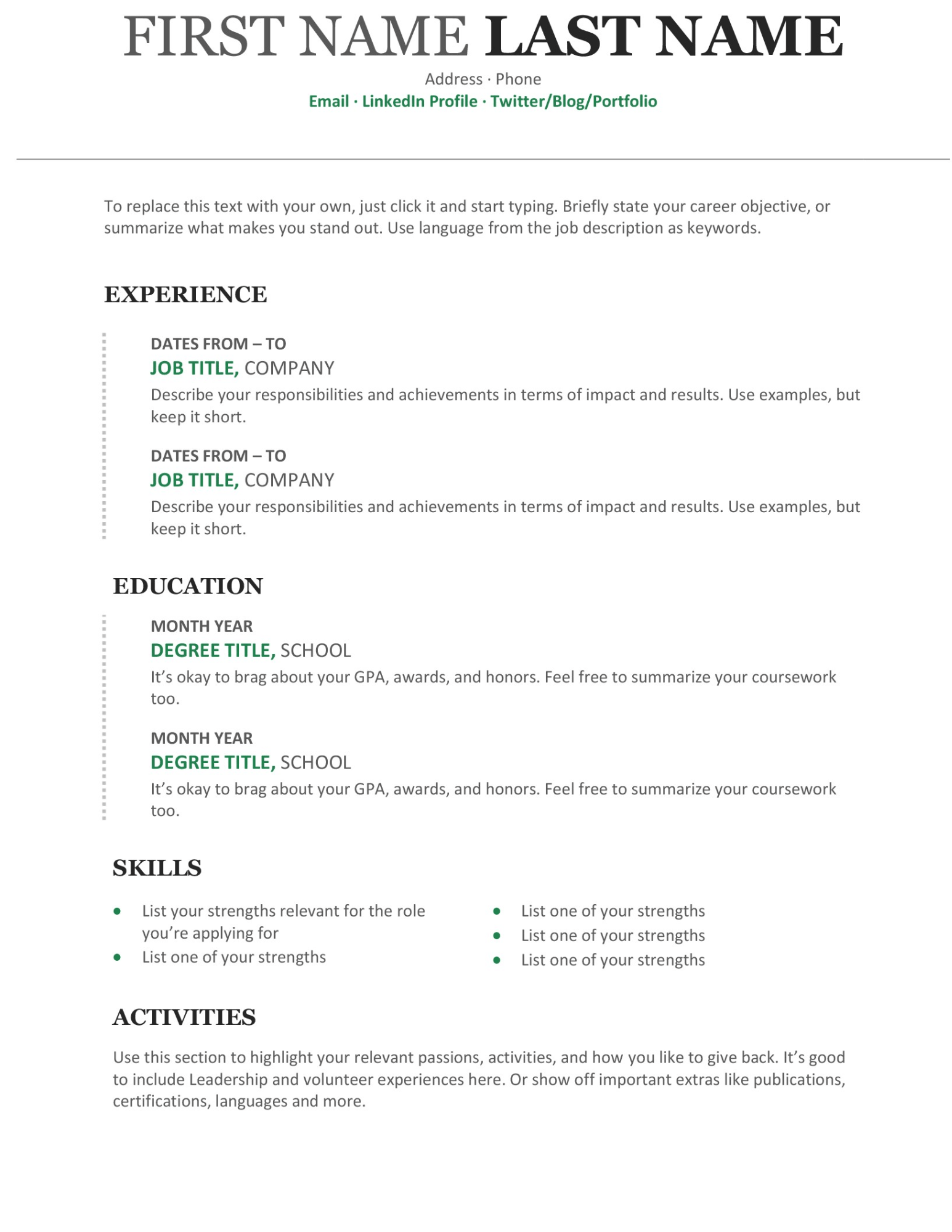
Key Takeaways
Well, here you have it - your nicely tailored resume in Word, ready to land you that job interview.
Although not the easiest task, we are convinced this article has given you all the necessary information on how to make a resume in Word and the confidence to do so easily.
Here’s what’s good to remember:
- Order your resume sections properly, usually in reverse-chronological order.
- Make sure that your section headings stand out from the rest of the text, by usually using a larger font size.
- Check if your chosen font, line spacing, and margins are aligned, readable, and professional-looking.
- Opt for an online resume builder such as the one Novorésumé provides for a more modern, time-saving, and HR-friendly resume.

To provide a safer experience, the best content and great communication, we use cookies. Learn how we use them for non-authenticated users.
How to Make a Resume on Word: Step-by-Step Guide
Creating a resume on Word is a straightforward process that anyone can master with a little guidance. By using the tools and templates available in Microsoft Word, you can design a professional-looking resume that will catch the eye of potential employers. In less than 100 words, here’s how to do it: Open Microsoft Word, choose a resume template, fill in your personal information, customize the design to your liking, and save the document. Voilà, you’re ready to start job hunting with a fresh resume in hand!
Step by Step Tutorial: Making a Resume on Word
Before we dive into the steps, let’s understand what we’re aiming for. A resume is your professional highlight reel – concise, well-organized, and tailored to the job you’re applying for. Microsoft Word offers various templates, but we’ll start from scratch for full customization.
Step 1: Open Microsoft Word
Launch Microsoft Word on your computer to get started.
When you open Word, you’ll see a variety of template options, but for this tutorial, we’re going to start with a blank document. You can find this option either on the initial screen or by selecting ‘File’ and then ‘New’ from the menu bar.
Step 2: Set Up Page Layout
Adjust the margins, orientation, and size of your document.
In the ‘Layout’ or ‘Page Layout’ tab, you’ll find options for margins, orientation, and size. Standard resumes typically have 1-inch margins and are in portrait orientation. Make sure your page is set to ‘Letter’ size for a standard 8.5"x11" document.
Step 3: Insert Header
Include a header with your name and contact information.
Click on ‘Insert,’ then ‘Header’ to add a header to your resume. This is where you’ll put your name in a larger font, followed by your contact information such as your phone number, email address, and LinkedIn profile. Keep it professional and easy to read.
Step 4: Add Sections
Create distinct sections for your experience, education, skills, and any other relevant information.
Use the ‘Heading’ feature to distinguish between sections like ‘Work Experience,’ ‘Education,’ ‘Skills,’ and any other categories relevant to your professional background. This will help organize your resume and make it easier for employers to scan.
Step 5: Enter Your Information
Fill in each section with your personal and professional details.
Within each section, list your experiences in reverse-chronological order, starting with the most recent. Be sure to include job titles, company names, dates of employment, and a brief description of your responsibilities and achievements.
Step 6: Customize Your Resume
Use fonts, colors, and formatting tools to personalize your resume.
Under the ‘Home’ tab, you’ll find options to change font styles, sizes, and colors. Remember to keep it professional – use consistent formatting and avoid overly stylized fonts or colors that could detract from the content.
Step 7: Save Your Resume
Save your document as a Word file and as a PDF.
Once you’re satisfied with your resume, save it by clicking ‘File,’ then ‘Save As.’ It’s a good idea to save it both as a Word document (.docx) and a PDF. The PDF version is best for submitting to employers, as it will maintain your formatting across different devices.
After you’ve completed these steps, you’ll have a polished resume ready to be sent to potential employers. Remember to proofread your resume carefully for any typos or errors before sending it out.
Tips for Making a Resume on Word
- Keep it simple. When it comes to resumes, less is more. Stick to a clean, professional design.
- Tailor your resume. Customize your resume for each job you apply for, highlighting the experience and skills that are most relevant.
- Use bullet points. They make it easier for employers to quickly scan through your experience and achievements.
- Be consistent. Ensure that your formatting is consistent throughout the document, including font sizes and styles, alignment, and spacing.
- Proofread. Always proofread your resume for spelling and grammatical errors before sending it to an employer.
Frequently Asked Questions
Can i use a template in word to create my resume.
Yes, Word offers a variety of templates that you can use as a starting point for your resume.
What font should I use for my resume?
Stick to professional and easy-to-read fonts like Arial, Calibri, or Times New Roman, and keep the font size between 10 and 12 points.
How long should my resume be?
Your resume should typically be one page long, especially if you have less than 10 years of experience. Aim for brevity while including all relevant information.
Should I include references on my resume?
Generally, it’s not necessary to include references on your resume. You can provide them later in the application process if requested.
How can I make sure my resume stands out?
Focus on achievements and quantifiable results in your work experience, use strong action verbs, and tailor your resume for each job application.
- Open Microsoft Word
- Set Up Page Layout
- Insert Header
- Add Sections
- Enter Your Information
- Customize Your Resume
- Save Your Resume
Crafting the perfect resume on Word might seem daunting at first, but it’s actually a piece of cake once you get the hang of it. By following the simple steps outlined above, you’ll be able to create a standout resume that showcases your skills and experiences in the best light. Remember, your resume is often the first impression you make on a potential employer, so make sure it’s a good one! Keep it clean, concise, and tailored to the job you’re applying for. Don’t forget to proofread – a resume riddled with typos is a surefire way to end up in the ‘no’ pile. And finally, always save your resume in both Word and PDF format, ensuring it can be opened and read on any device. Now go forth and conquer the job market with your newly minted resume!

Matt Jacobs has been working as an IT consultant for small businesses since receiving his Master’s degree in 2003. While he still does some consulting work, his primary focus now is on creating technology support content for SupportYourTech.com.
His work can be found on many websites and focuses on topics such as Microsoft Office, Apple devices, Android devices, Photoshop, and more.

Share this:
- Click to share on Twitter (Opens in new window)
- Click to share on Facebook (Opens in new window)
Related Posts
- How to Remove Page Number from First Page of Google Docs and Google Sheets
- How to Get Rid of Header in Google Docs: A Step-by-Step Guide
- How to Make the Header Smaller in Word 2013: A Step-by-Step Guide
- How to Delete a Header in Excel 2013: Step-by-Step Guide
- How to Insert Picture in Excel Header
- How to Use a Signature Font in Word for Office 365: A Step-by-Step Guide
- How to Add the Filename to the Header in Excel 2013: A Step-by-Step Guide
- How to Repeat Something at the Top of Every Page in Word 2019: A Step-by-Step Guide
- How to Change or Edit an Existing Header in Excel: A Step-by-Step Guide
- What is the Best Microsoft Word Cursive Font? A Comprehensive Guide
- How to Change Font of Page Numbers in Word: A Step-by-Step Guide
- Locating the Center Header Section in Excel on Windows 11: A Guide
- How to Change the Default Font in Word 2013: A Step-by-Step Guide
- How to Remove Page 1 Watermark in Excel
- How to Make a Header Row in Google Sheets: A Step-by-Step Guide
- How to Change the Default Font in OneNote 2013: Step by Step Guide
- How to Add a Font in Microsoft Paint: Step-by-Step Guide
- Disney font on Word: How to Add a Touch of Magic to Your Documents
- How to Make Columns in Word Office 365
- How to Add Same Header to All Sheets in Excel 2013: A Step-by-Step Guide
Get Our Free Newsletter
How-to guides and tech deals
You may opt out at any time. Read our Privacy Policy
- PRO Courses Guides New Tech Help Pro Expert Videos About wikiHow Pro Upgrade Sign In
- EDIT Edit this Article
- EXPLORE Tech Help Pro About Us Random Article Quizzes Request a New Article Community Dashboard This Or That Game Forums Popular Categories Arts and Entertainment Artwork Books Movies Computers and Electronics Computers Phone Skills Technology Hacks Health Men's Health Mental Health Women's Health Relationships Dating Love Relationship Issues Hobbies and Crafts Crafts Drawing Games Education & Communication Communication Skills Personal Development Studying Personal Care and Style Fashion Hair Care Personal Hygiene Youth Personal Care School Stuff Dating All Categories Arts and Entertainment Finance and Business Home and Garden Relationship Quizzes Cars & Other Vehicles Food and Entertaining Personal Care and Style Sports and Fitness Computers and Electronics Health Pets and Animals Travel Education & Communication Hobbies and Crafts Philosophy and Religion Work World Family Life Holidays and Traditions Relationships Youth
- Browse Articles
- Learn Something New
- Quizzes Hot
- Happiness Hub
- This Or That Game
- Train Your Brain
- Explore More
- Support wikiHow
- About wikiHow
- Log in / Sign up
- Job Application Documents
- Resume Preparation
How to Create a Resume in Microsoft Word
Last Updated: September 5, 2024 Approved
This article was co-authored by Alyson Garrido, PCC . Alyson Garrido is an International Coach Federation accredited Professional Certified Coach (PCC), Facilitator, and Speaker. Using a strengths-based approach, she supports her clients with job search and career advancement. Alyson provides coaching for career direction, interview preparation, salary negotiation, and performance reviews as well as customized communication and leadership strategies. She is a Founding Partner of the Systemic Coach Academy of New Zealand. wikiHow marks an article as reader-approved once it receives enough positive feedback. In this case, several readers have written to tell us that this article was helpful to them, earning it our reader-approved status. This article has been viewed 1,641,039 times.
Resumes detail a person’s work experience, education, skills and achievements. A good resume that is clear, concise and easy to read is essential when looking for a job. Resumes should be word processed and should be neat and tidy. Microsoft Word offers you the option of creating your resume through templates, but you can also create your resume from scratch using Word's formatting features.
Sample Resumes

Creating a Resume from a Template (Word 2003, 2007, 2010, 2013)

- In Word 2007 you will have to click on “installed templates.”
- In Word 2010 it will be “sample templates.”
- In Word 2011 it will be “new from template.” [1] X Research source
- In Word 2013 the templates will be displayed when you click on “New.”

- In Word 2013, after clicking on “New” you will see a number of templates and a search bar which says “search for online templates.”
- After searching you will see a number of different resume templates to try out.

- Here you will be able to look through a number of templates for resumes and cover letters that you can download for free and edit in Word.
- You may have to sign in with your Microsoft online account to use these templates. [2] X Research source

- Be sure to look carefully at the detail of your resume and proofread it thoroughly.
- All of the versions of Word from 2003 to 2013 all come with some pre-installed templates for resumes.

- Click on the “Other Documents” tab, and then select “Resume Wizard.”
- Follow the wizard's instructions. The wizard will walk you through the resume creation process step-by-step
- If you do not see this option, it was not installed when you installed Word, and you will need to run the installation program again to install it.
Creating a Resume Without a Template

- Education and qualifications.
- Work and volunteer experience.
- Skills and qualities.
- It should also include your full contact details and state that references are available upon request.

- Most chronological resumes only cover the last 5 to 10 years of your employment history.
- You may wish to include positions earlier than this if they are appropriate to the job you're seeking.
- This is the format most American employers prefer to see resumes in.

- A combination resume might list your key skills at the top before providing a short account of your experiences.
- This type of resume can be helpful for those entering the job market with little work experience, or for those trying to change careers. [6] X Research source

- The CV is commonly used when applying for positions in Europe, and also when applying for positions at colleges and universities worldwide.
- CVs can be thought of as living documents that records all your work and achievements, which will generally grow and develop over time more than a resume. [7] X Trustworthy Source University of North Carolina Writing Center UNC's on-campus and online instructional service that provides assistance to students, faculty, and others during the writing process Go to source
Writing Your Resume

- If your resume extends beyond one page, ensure that your name is in a header on every page.
- Your email address should appropriate for a job application. Use your own name or initials if possible.
- Don’t use something jokey such as "sly-dude," "foxymama," or "smokinhot."

- For example, you might write that your objective is “To contribute to the design of new word processing software.”
- Alternatively it may state the position you hope to attain, such as “A position as in healthcare policy and research.”
- Objectives have become less common, and you may prefer to provide this information in your covering letter . [8] X Research source

- You can include a bullet point or two to provide a little further information on your specialism, if it is appropriate for the position you are applying for.
- If you achieved any honours or awards as part of your studying or training include these here.

- Use bullet points to make sure it is clear and easy to read or scan through for key words relating to the position you are applying.
- You can include volunteer positions if they relate to the job you're seeking or if you have little paid experience. [9] X Research source

- You can title this section as “Other Relevant Skills”, or just “Skills.”
- This could include proficiency in foreign languages, knowledge of particular computer software and programmes, and any other specific skills not previously mentioned. [10] X Research source
- Take care to avoid repeating yourself. You don’t need to say you have “excellent communication skills” more than once.

- Allow reasonable margins around the edges of the page. Word's default settings are usually sufficient for this.
- Left-align your section headings. You can use single-spacing after a heading and before the section content, and double-spacing before a heading.
- Get your resume down to one page if at all possible. You can try adjusting your line spacing in the Paragraph dialog box, but don’t lose your neat formatting trying to get it down to one page.
- Rethink your words and try to express yourself more concisely.
Expert Q&A

- Don't wait until you're looking for work to update your resume. Any time you have a promotion or significant accomplishment, add the new information to your resume. Thanks Helpful 5 Not Helpful 1
- Always tailor your resume to the type of position you're seeking. You may have to add, rearrange, or delete accomplishments or entire sections according to what the position requires. Thanks Helpful 6 Not Helpful 2

- The appearance and format of your resume is a reflection of your competence; be sure it represents you at your best. Thanks Helpful 5 Not Helpful 1
- Be sure that all the statements in your resume are both factually and grammatically correct and that all words are spelled correctly. Thanks Helpful 4 Not Helpful 1
You Might Also Like

- ↑ https://kb.iu.edu/d/agst
- ↑ https://create.microsoft.com/en-us/templates/resumes
- ↑ http://cla.umn.edu/student-services-advising/career-internship-services/job-search-resources/resume-guide/formatting-0
- ↑ http://writingcenter.unc.edu/handouts/curricula-vitae-cvs-versus-resumes/
- ↑ http://www.career.cornell.edu/story/resumes/parts.cfm
About This Article

1. Open Word and click File . 2. Click New . 3. Click a resume template. 4. Type your own data into each field. 5. Save your resume as a new file. Did this summary help you? Yes No
- Send fan mail to authors
Reader Success Stories
Jan 19, 2017
Did this article help you?

Asrar Ahamed
May 16, 2020
Amisha Khatri
Nov 23, 2016
Jan 9, 2017
Aug 12, 2017

Featured Articles

Trending Articles

Watch Articles

- Terms of Use
- Privacy Policy
- Do Not Sell or Share My Info
- Not Selling Info
Get all the best how-tos!
Sign up for wikiHow's weekly email newsletter
- Delete a Page in Word
- Convert PDF to Word
- Page Numbers in Word
- Double Space in Word
- Table of Contents in Word
How to make a resume in Microsoft Word
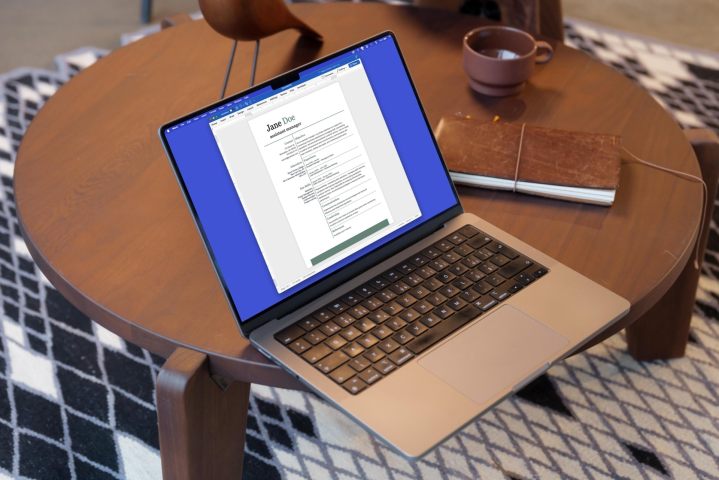
Whether you’re just entering the workforce or need a resume refresh, you’re probably considering using Microsoft Word for the task. We’ll walk you through options for making a resume in Word, from using helpful templates to creating a resume from scratch.
Use a built-in Word resume template
Use a word resume template on the web, use a third-party word resume template, create a word resume from scratch.
If you’ve just downloaded Microsoft Word and want the quickest and easiest way to make a resume, start with one of Microsoft’s templates . You can look for one directly in Word and choose from a large collection of options.
Open Word, select File > New , and pop “resume” into the Search box. You can then browse the templates with resumes for specific jobs and industries along with those for any type of position.
Choose a template to see a description and pick Create to use the resume.
The Microsoft resume templates come with placeholders that you can simply swap out for your own details. This is handy if you like the appearance of all elements in the template. Of course, if you’re not fond of the color scheme or font styles, you can change those types of items.
- Microsoft Copilot ‘spews data all over the floors,’ says influential CEO
- Microsoft is fixing my biggest problem with Windows 11 on handhelds
- Microsoft Word may delete your files — here’s how to avoid it
Remember to go to File > Save As to save a copy of your resume.
Maybe you don’t have Microsoft Word on your computer yet but need your resume in that format. You can use Word on the web for free with a Microsoft account and take advantage of resume templates.
Visit the Microsoft Create website and explore the resume templates . If you see one you like, select it to open it directly in Word for the web.
Alternatively, select Create from scratch and choose Resumes, flyers, brochures . When Word opens, use the Designer sidebar on the right to browse through and choose a resume template.
Then, swap out the placeholders for your own details and customize the resume as you like.
If you like the template idea but don’t care for any of the Microsoft options, you can check out third-party templates for your resume. Here are just a few of the top options and samples of resume templates they offer for free.
Resume Genius
With Resume Genius , you can pick from over a dozen custom Word templates to download. From simple to professional to aesthetically pleasing to visually appealing, you’re sure to find at least one resume template you like.
Hloom offers over 15 resume and CV templates for free and even more if you don’t mind paying. Be sure to select Free on the left below License if you want to narrow down the no-charge options. As a bonus, you’ll also see a tab for cover letters if you’re in the market for one of those too.
Template.net
One more place to check out for Word resume templates is Template.net . You’ll find a large variety of attractive options specific to position or resume style. Like with Hloom, select Free beneath License on the left, and be sure to take a look at the cover letter collection too.
After you download a resume template from one of the above sites, simply customize it with your own details.
Maybe you’d prefer to simply create your resume from scratch; this is always an option if you have the time. Consider reviewing the above templates and samples for the information you should include and ideas for formatting.
To get started, add the following details to your resume:
Full name and current position : Place your name and position at the top. If you don’t have a current position, you can certainly omit it.
Objective (optional) : Provide a brief description of your goal to potential employers beneath your name and position. This is an optional inclusion — if you add one, try to keep it short and sweet with one to two meaningful sentences.
Contact details : Include at least your email address and phone number. If you have an up-to-date website or LinkedIn profile, you can add these as well. Make sure these details are kept together in a specific location so they’re simple to find.
Work experience : List your work experience in chronological order with the most recent first. Start with your position, then move onto the employer, month, and year you worked there, and your duties. You should include your duties and responsibilities in a list format making them easy to review.
Education : List your educational history in chronological order with the most recent first. Start with the degree, then add the school with the month and year you attended.
Skills, awards, and more : Use a list format to add your skills, awards, certifications, volunteer work, and any other details you feel important to the position or company.
Here are several tips when formatting your resume in Word:
- Use a heading or larger font for your full name at the top.
- Add headings for the Experience, Educations, and Skills sections.
- If you decide to use color, keep it to just one or two complementary colors.
- Try to use the same font style throughout, taking advantage of font sizes, headings, or bold formatting for more prominent details.
- Use a font that’s easy to read like a 12-point Arial, Calibri, Georgia, or Times New Roman for the main body text. You might also consider which font style works better for reading on the web versus on a printed piece.
- If your resume spills over onto the first few lines of a new page, use Microsoft Word’s double spacing tool to adjust line and paragraph spacing.
- If you include a headshot, make sure it’s a professional one.
- Consider using a table to structure your resume, as shown above.
Finally, be sure to keep the appearance and content of your resume consistent.
Is it OK to make a resume in Word?
Absolutely! This is exactly the type of document you should create in a word processing application like Microsoft Word. If you prefer, you can also use a web application like Google Docs to make a resume or downloadable software like LibreOffice Writer.
Once your resume is complete, you can save it as a PDF or other requested format in most word processing applications for submission to the potential employer or hiring manager.
How far back should a resume go?
Most experts recommend 10 to 15 years is appropriate for a resume. Keep in mind that you should include relevant work experience for that time period . For example, if you’re a nurse who worked at a fast-food chain for two months 12 years ago, you can likely exclude that job.
How many pages should a resume be?
The standard for a resume is one to two pages. However, this can depend on the length of your experience and education in relation to the position for which you’re applying. For instance, someone who’s been in the workforce for 20 years might require two pages, but a recent college graduate would probably only need one page.
Editors’ Recommendations
- Microsoft Copilot: how to use this powerful AI assistant
- Microsoft ends support for this four-year-old Surface device
- Best Buy knocked $200 off the Microsoft Surface Pro with CoPilot+
- Copilot Pro: how to use Microsoft’s advanced AI sidekick
- It’s official — Microsoft WordPad is dead after 29 years
- How-To Guides

Microsoft's Copilot+ PC initiative has been a smash hit, with many of them landing among the best laptops, but not for the AI hardware inside. Now, finally, Microsoft is putting the neural processing unit (NPU) inside Copilot+ PCs to good use. Starting today and going throughout the next two months, Microsoft will begin rolling out the 24H2 update for all Windows 11 PCs, and in the process, unlock several features for Copilot+ PCs, including the highly controversial Recall.
Recall is definitely the star of the show here, which will start showing up on Copilot+ laptops with a Snapdragon X chipset throughout October. Last week, Microsoft laid the groundwork for the release of Recall, detailing the security architecture of the feature and addressing some major criticisms of it. Now, for example, Recall is turned off instead of on by default. Microsoft is also allowing users to filter websites and giving users more control over their snapshots, including deleting them all.
You might want to start treating your web browser like you're always at work, at least if you want to use Microsoft's new Copilot Vision feature. The feature, which is natively built into Microsoft Edge, is able to "see what you see, and hear what you hear" as you navigate your browser, according to Microsoft's Executive Vice President Yusuf Mehdi.
All of this AI snooping isn't for nothing. Copilot Vision looks at what you're doing online to answer questions, provide recommendations, and summarize content. It can work with the new Copilot Voice feature, for example. Microsoft demoed the capabilities on Rotten Tomatoes, showing a user chatting with Copilot while browsing the website and looking for movie recommendations. Ultimately, Copilot settled on an Australian comedy for the Australian speaker, saying it made the choice because, "well, you're Australian." I guess that's taking personal context into account.
The Surface Pro 11 represents Microsoft's latest generation of its Windows tablet with a detachable keyboard. It's become a less popular type of 2-in-1 laptop over the last few years, with the 360-degree convertible becoming the dominant form factor. Even so, Microsoft put together a new machine that leverages Qualcomm's Snapdragon X chipset for great performance and battery life, while retaining what's always made the Surface Pro great.
Asus has introduced a competitor, the ProArt PZ13, which offers up some real competition. It also has great performance and battery life, except it costs a lot less -- upward of $700 less. Is greater value enough to unseat the Surface Pro 11's place on our list of best 2-in-1s? Specs and configurations

What is a resume builder?

Resume builders explained
Benefits of using a resume builder.
- Time savings : Create a professional-looking resume in minutes, rather than spending hours formatting and writing it from scratch.
- Professional content : Make your resume look polished and professional with suggested content.
- Customizable options : Easily modify the content and format of your resume to fit your needs and showcase your skills.
- Useful guidance: Get suggestions on what to include in your resume and how to format it to make the strongest impression.
- Easy updates: Quickly tweak or update your resume as needed, so you’re always prepared.
Resume builder features and capabilities
How to use a resume builder, steps to creating a resume.
- Tailor your resume to the job: Customize your resume to match the requirements of the job you’re applying for. Highlight your most relevant experience and skills and use keywords from the job description.
- Keep it concise: Aim for one to two pages in length and use bullet points to make it easy to read.
- Use action verbs: Make your resume dynamic and engaging with action verbs to describe your accomplishments and responsibilities.
- Proofread : Edit your resume carefully to ensure that it’s free of errors. Consider asking a friend or mentor to review it and offer feedback.
- Formatting issues : Try resetting the template or adjusting the layout options.
- Content issues : Use content assistance features to get suggestions for different sections. Try rephrasing your content to make it clearer and more concise.
How to choose the right resume builder
- User interface and ease of use: Look for a resume builder with an intuitive and user-friendly interface. An easy-to-navigate tool will help you create your resume quickly and efficiently.
- Template variety: Choose a resume builder that offers a range of professionally designed resume templates . With more options to choose from you’ll be able to find a template that matches your personal branding and industry standards.
- Customization options: Look for a resume builder that allows you to customize the layout and design of your resume to reflect your unique style.
- Content assistance: : Consider a resume builder that provides built-in spelling and grammar check features, as well as content suggestions for different resume sections. Error-free content will showcase your skills and experience most effectively.
- Pricing: Compare the pricing of different resume builders to find one that fits your budget. Some resume builders are free, while others require a subscription or one-time fee

Tips and Templates

Word Processing

Resume templates

Grammar checking
Why should i use a resume builder.
A resume builder is a tool that can help you create a professional and effective resume quickly and easily. With a range of professionally designed templates, customization options, and content assistance features, a resume builder can save you time and effort while helping you highlight your skills and experience.
How much do resume makers cost?
The cost of resume makers varies depending on the tool and the features it offers. Some resume builders are free, while others require a subscription or one-time fee. It’s important to compare the pricing and features of different resume builders to find one that fits your budget and meets your needs.
Where can I download free resume templates?
Many websites and online resume creators offer free resume templates for download. Search for “free resume templates” online to find a range of options. Keep in mind that the quality and design of free templates may vary, so it’s important to choose a template that looks professional and matches your personal branding.
Can I make a resume with Word?
Yes, you can use Word to create a resume. Word offers a range of customizable resume templates . Use Word’s formatting and design tools to help create a resume from scratch.
How do I build a resume online?
To build a resume online, use a resume builder tool. These tools typically offer a range of templates, customization options, and content assistance features to help you create a professional and effective resume. Choose a template, add your personal content, and customize the layout and design to create your resume.
What are the disadvantages of resume builders?
While resume builders offer many advantages, there are some potential disadvantages to consider. Some resume builders may have limited template options or customization features, which can make it difficult to create a unique and personalized resume. Additionally, some resume builders may require a subscription or one-time fee, which can add to the cost of creating a resume. Carefully evaluate the features and limitations of different resume builders to find one that meets your needs.
Follow Microsoft 365
How To Make a Resume in Word
There are two different ways to create a resume in Microsoft Word: either by using a resume template or by creating your own resume from scratch. However, as anyone who’s used Word before knows, the program is by no means specifically designed for resume creation and it can therefore be difficult to format and style your resume exactly how you want it.
This article will cover whether or not you should use Word to create your resume, how to make a resume in Word using a template or from scratch, and how to best format your Word resume if you decide to use the program.
Should You Create a Resume in Word?
Creating a resume in Microsoft Word certainly has its pros and cons. On the plus side, it’s free, there are many different templates available both within Word and online for use with Word, and for many years it has been the go-to program for creating your own resume.
Additionally, a Word resume document can be easily edited by a recruiter if you choose to use one, whereas it’s much more difficult to make changes to a PDF or other type of document. And, if you decide to create your own Word resume without using a template, you will enjoy complete creative control - something you don’t necessarily get with a template or a resume builder tool.
However, Word has some drawbacks as well, such as the fact that many of the templates are dated and may produce a rather dull and drab end result, it can be difficult and time-consuming to make changes to a template, and the templates are not necessarily optimized for the current Applicant Tracking Systems ( ATS ) that the vast majority of companies use to filter job applicants.
Microsoft Word has a bit of a learning curve, so even something small like reordering the sections of a template can cause a major headache. Making your own resume from scratch in Word is obviously even more difficult. It not only requires experience using the program, but also some design experience in order to create a resume that is pleasing to look at, well-organized, and formatted properly so that it will pass an ATS scan.
It will also take significantly longer to create your own resume than it will to either use a Word template or to simply enter your details into a resume builder which can be frustrating when you want to begin applying for jobs immediately.
As an alternative to Microsoft Word, Jobseeker offers a resume builder tool with a library of modern, easily customizable resume templates that are ATS-optimized. It’s simple to use and you can be sure that your resume will stand out.
But, if you prefer to stick with Microsoft Word, you can certainly still create a top-notch resume. Here’s how:
How To Use a Microsoft Word Resume Template
First we’ll look at the easier way to use Word for resume creation: using a template.
Step 1: Pick a Template
Start by opening Microsoft Word and searching for ‘resume’ in the top right search bar. You can then select ‘templates’ and pick one that fits your personality, job niche, and style. For example, if you are applying for a corporate accounting job, you will likely want to select a more staid template than if you are applying for a graphic design position or another creative job.
You can also search for free downloadable templates online that are designed to be used with Word, if you don’t like any of the standard options.
Step 2: Create Your Resume Header
Once you’ve picked your favorite template and opened it, you’ll begin by completing your resume header. This contains basic information like your full name, address , email , and phone number. You may also wish to include your current job title, LinkedIn URL, personal or portfolio website URL, and/or social media links in your header if that information is relevant to your profession.
Some Word templates will include these fields, but you may have to add them manually if you’ve chosen a template that does not.
Step 3: Write Your Resume Summary Statement
Next, add your resume summary statement or a resume objective . A resume summary is appropriate for the vast majority of applicants as it sums up your professional experience and personal qualities that make you a good fit for the position. A resume objective is better suited for those who are just entering the professional world (i.e. students or recent graduates) or those who are making a career change.
Your resume summary or objective is a brief snippet just under your resume header that should be written with the goal of attracting and keeping the attention of the hiring manager who is reading it, so they don’t just flip right past your resume.
Step 4: Input Your Work Experience, Education, Skills, and Accomplishments
Finally, it’s time to enter in your work experience , education history, personal skills , and professional accomplishments. While the majority of this is filling in the blanks, you should still make these sections as compelling as possible by highlighting achievements over responsibilities and tailoring your resume to each application.
Reread the job posting that you are applying for and implement some of the key words and phrases that the employer uses - this will help you get through the ATS screening phase and it’ll let the hiring manager know that you paid attention and took the time to customize your resume.
If you don’t have a lot of work experience to highlight, include optional resume sections like languages, volunteering experience, hobbies and interests, etc. This will not only fill out your resume so it doesn’t look empty, but it will also give your potential employer a better understanding of who you are as a well-rounded person.
Remember, your resume should be a single page unless you have more than ten years of experience in your field, in which case it shouldn’t exceed two pages.
How To Create a Resume in Word Without a Template
If you prefer not to use a Word resume template, you can still use the program to create a resume. However, unless you have some design skills and a lot of patience, you’ll likely want to stick with a template or use Jobseeker’s resume builder tool.
Still want to go for it? Be sure to include all of the same sections that we outlined above and clearly label each one with a heading. You can play with the page margins and line spacing in order to fit all of your credentials on a single page, and use page borders, lines, and/or color blocks to spice up your resume and divide it into a clear, easy-to-read layout.
Word has some built-in features that lend themselves to creating an eye-catching resume, such as the column tool which allows you to format your document with one, two, or three columns, or to create a sidebar on the left or right side of the page. A sidebar is a great way to add interest to the page while still reserving the larger main column for the bulk of your information.
You can also change the alignment of the text, although only your header should be centered. Otherwise, stick with left alignment as it’s the easiest to read and the most professional.
Word has a variety of text styles available that can save you time while formatting your resume. They can be used as follows to create a uniform layout:
- Heading 1 (H1): Use H1 for your most important title, which should be your name across the top of your resume. This is the largest text in the document and it will be bold and impactful.
- Heading 2 (H2): Use H2 headings to label the sections of your resume (i.e. Work Experience, Skills, etc.). H2 text will be smaller than H1, but still bold and big enough to stand out.
- Heading 3 (H3): Use H3 headings when you are listing your job titles within your Work Experience section. This should be just barely bigger than normal text, but still bold.
- Normal text: Everything else on your resume should be written using the Normal style, including the bullet points under each job title, your resume summary, and descriptions of your skills. Use 11 or 12 as your Normal font size.
Word has default settings for each of these styles, but you can go in and set your own font, text size, color, and whether each style will be bold and/or italicized. Whatever style you decide to use, be consistent with it throughout your entire resume. This will provide clear organization and a clean look.
Formatting Your Word Resume
Whether you opt to use a resume template or not, here are some formatting items to keep in mind as you create your resume in Word:
Fonts and Colors
Don’t go overboard with fonts or colors in your resume - this is, after all, a business document. Choose a professional, easy-to-read font like one of the following:
- Trebuchet MS
While you can deviate from the classic black text, be sure that your resume will still be readable by using dark, muted colors like navy, dark gray, or forest green.
If you can’t resist a pop of color, consider changing the background color of your header to something that’s not garish (i.e. no hot pink or neon green) and make the header text a contrasting color, like white text on a navy background or black text on a sage green background.
Clear Layout
Keep your Word resume layout fairly simple - include two columns at most and clearly label each section. If your resume looks like a jumbled mess, recruiters and hiring managers won’t take the time to decipher it and you’ll likely be skipped over as a candidate.
Watch for Jumps
Microsoft Word is infamous for its poor ability to handle layout changes (like moving or resizing a photo , adding a line break, etc.), so if you do decide to change a template or create your own layout, make sure that you review it closely when you’re done to ensure that nothing has sneakily moved around.
Spell Check
And, of course, you should thoroughly spell check your resume before you send it off to any potential employers. Nothing screams ‘unprofessional’ like misspelled words on your resume. Word has a built-in spell check feature, but you should never rely completely on that. Always read through your resume, or, if spelling isn’t your strong suit, have a friend or family member double-check it for you.
Saving Your Word Resume
In most cases, you’ll want to save your resume as a PDF as well as a Word document. Most ATSs will read PDFs, and the PDF format will prevent anything from going awry with your careful Word formatting, which can happen if you submit a Word document and the hiring manager has a different edition of the program.
It’s also a good idea to print out a few copies of your resume so that you can see how it will look when your potential employer prints it out to read it, and bring them with you if you score an interview.
Finally, save your resume with a file name like ‘JaneDoeResume’ so it’s immediately clear to the hiring manager what document they are looking at and so there won’t be any confusion in the application process.
Key Takeaways
Microsoft Word can be difficult to use for resume creation, but it can certainly be done with a template or by creating your own resume format. Just remember to keep an eye out for the infamous ‘Word jump’ as you build your document.
If creating a resume in Word is too frustrating, you can produce a polished, professional resume on Jobseeker in just a few steps. Choose from a wide selection of templates, easily change the colors and fonts to fit your tastes, and know that your resume will be ATS-optimized.
Get ahead of the competition
Make your job applications stand-out from other candidates.

How to Show Promotion on Resumes for Best Results

Highlighting Your Technical Skills for Resumes

How Far Back Should a Resume Go With Experience?
Create designs that inspire
Trending searches, productivity, social media, generate stunning ai-powered visuals.

A girl rides a skateboard while walking her dog. The girl is wearing a purple sweatshirt, baggy jeans and boots. She has expressive, round brown eyes and a look of determination. The background is an out of focus park and the girl is in a 3d illustrated animation style.
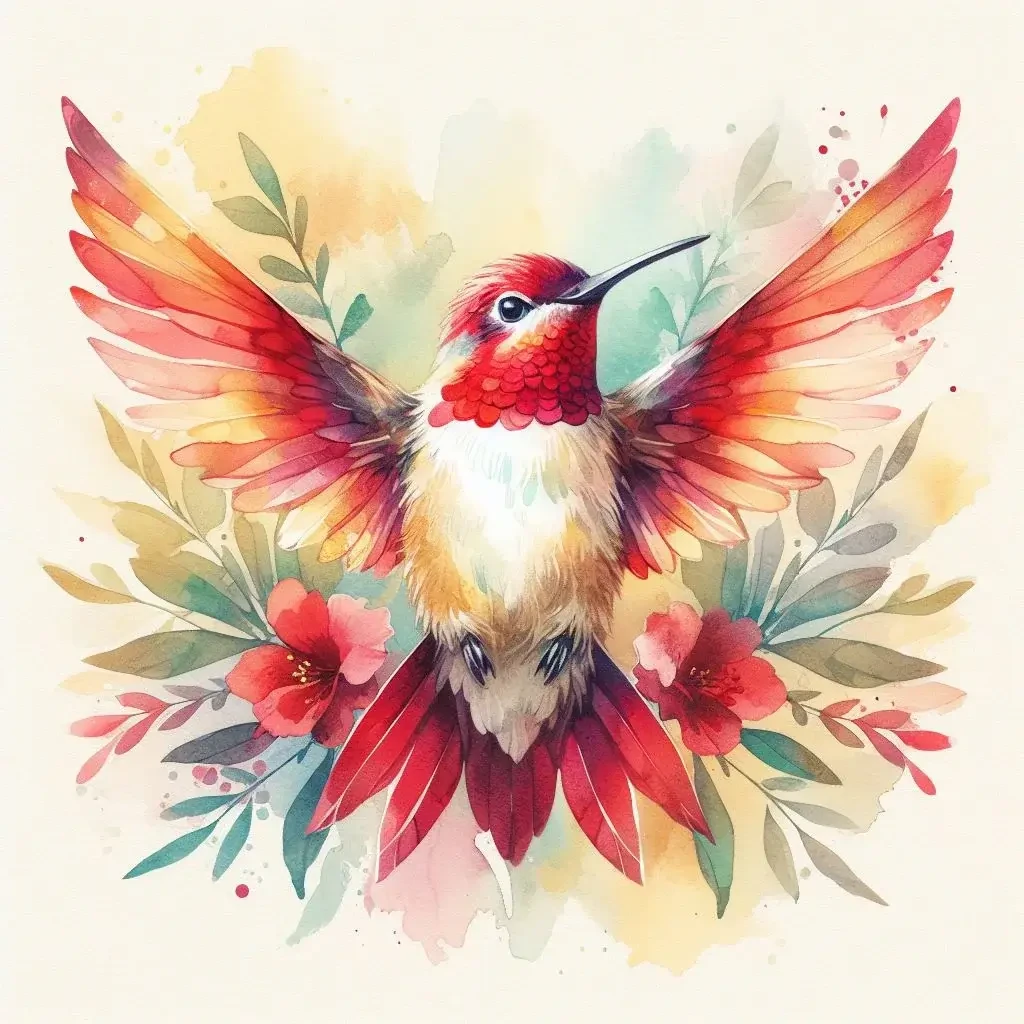
A watercolor hummingbird, centered, in red and yellow with a soft cream, watercolor background.

A banana with sunglasses surfing a blue wave.

Front-facing view of a mountain with floral decorative elements, papercraft quilling style, in pastel pink, blue and purple colors.

An abstract background of melting liquid with a metallic sheen, dark purple and gold colors with reflective studio light.
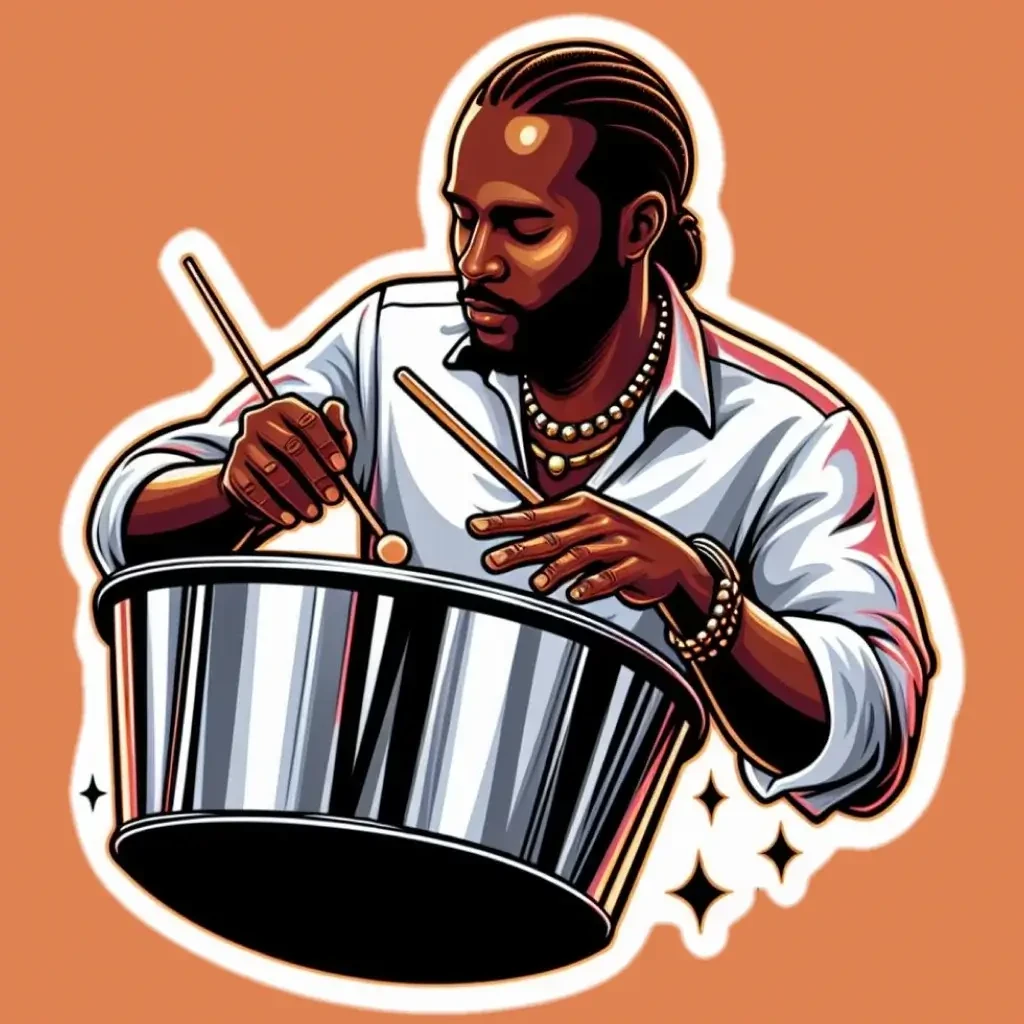
Illustration of a man playing a decorated steel pan drum.

A macro, detailed portrait of the face of a Dalmatian dog staring straight ahead with bright blue eyes on a solid pastel blue, out of focus background. The portrait is realistic with studio lighting.

A yellow sun with orange rays rises over white and purple clouds in a pop art style. There should be a halftone effect and screen printing aesthetic. The orange rays radiate outward and fill the background.

A group of assorted donuts in a pink bakery box.

A portrait of a man in a digital collage style. The man is wearing thick red glasses with circular patterns in blue and orange on the inside of the frames. The man is in a red polka dot shirt with a background of thick, brightly colored lines in pink, blue, and red. Collaged into the background is a ferris wheel and a circus tent.

A profile view of a caterpillar crawling on a moss-covered rock with the lush, green forest in the background, macro view, detail, close-up.

Cartoon style woman with a blue hat, fishing on a river near a forest.

A colorful street scene in the style of Mexican mural art. The street has adobe-colored shops on both sides with striped awnings. There is a fountain in the center and trees and mountains in the distance.
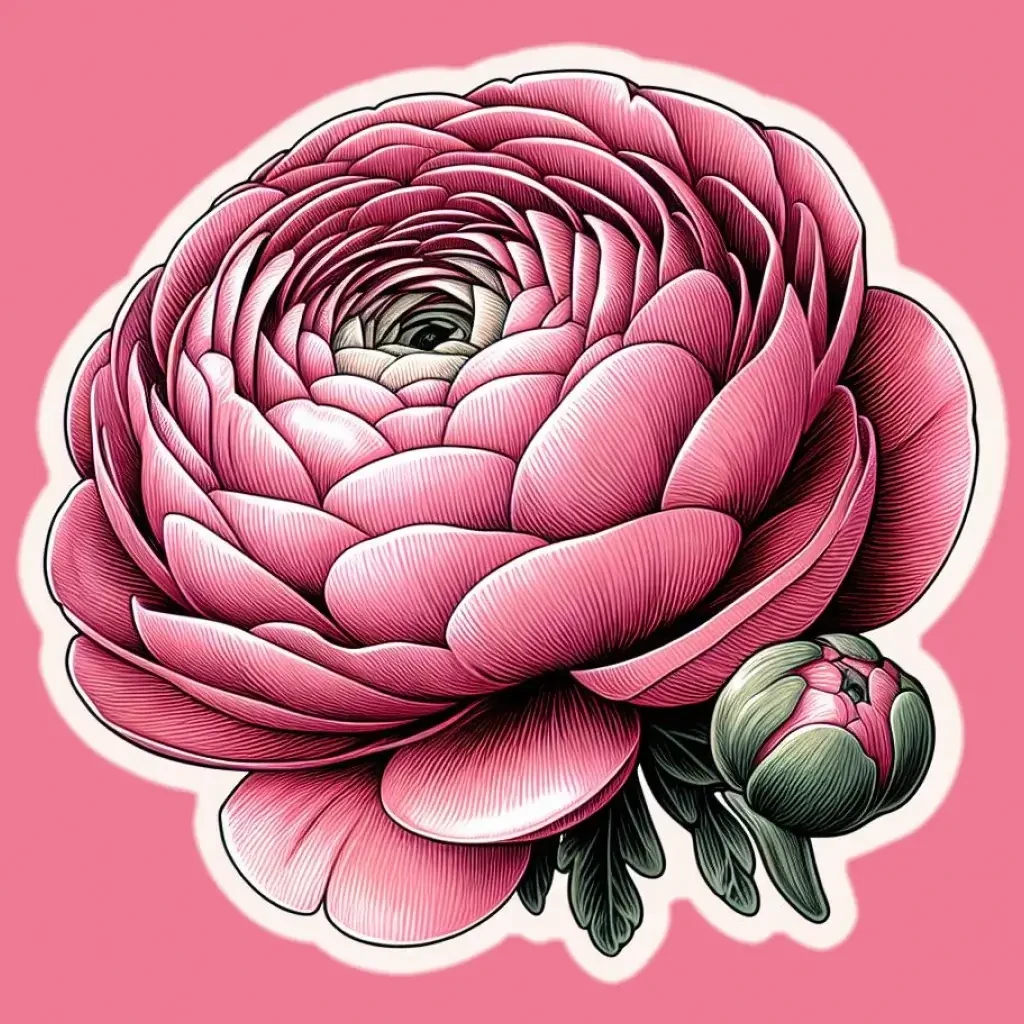
A single pink ranunculus in the style of a vintage botanical drawing.

A unicorn stands on a wooden pier looking out over clouds below, with a starry night sky above.
Create and edit in an instant with Microsoft Designer

Image generator
Generate any image you can imagine with just a text description.

Background remover
Remove the background from your image in one click.
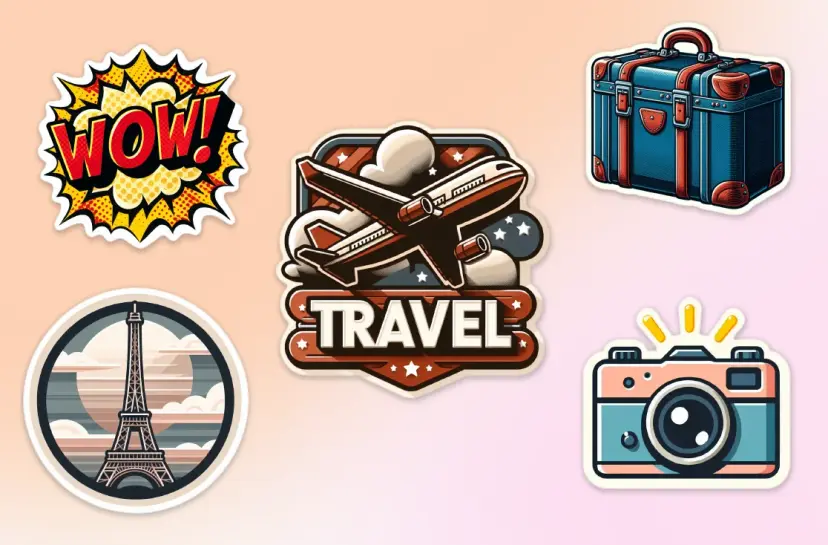
Sticker creator
Describe the sticker you want, and our AI will generate it for you.
Browse thousands of customizable templates
Fresh picks.

Celebrate an occasion

Food and drink
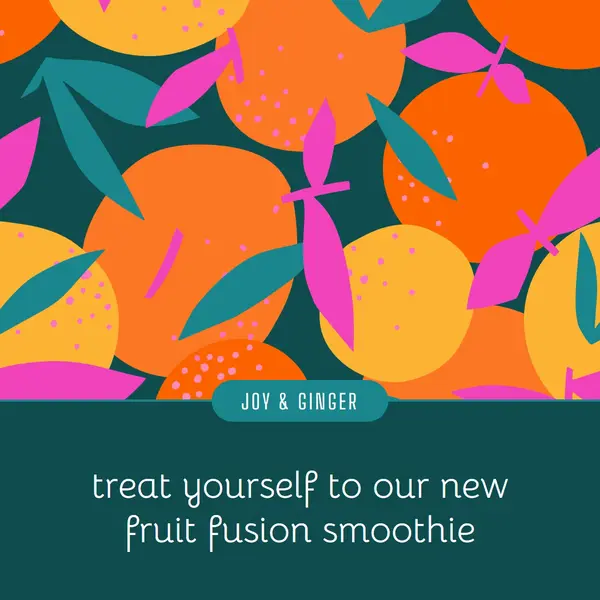
How it works
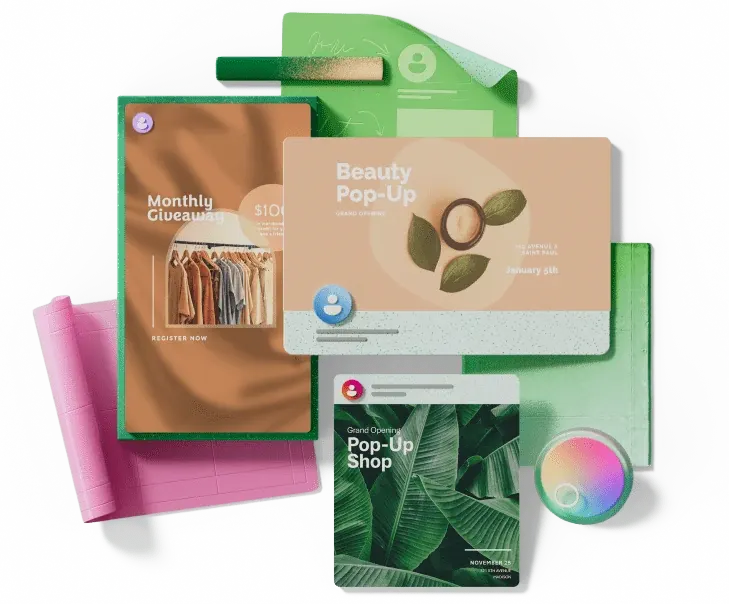
1. Start with the perfect template

2. Customize it with help from AI
See the templates for:
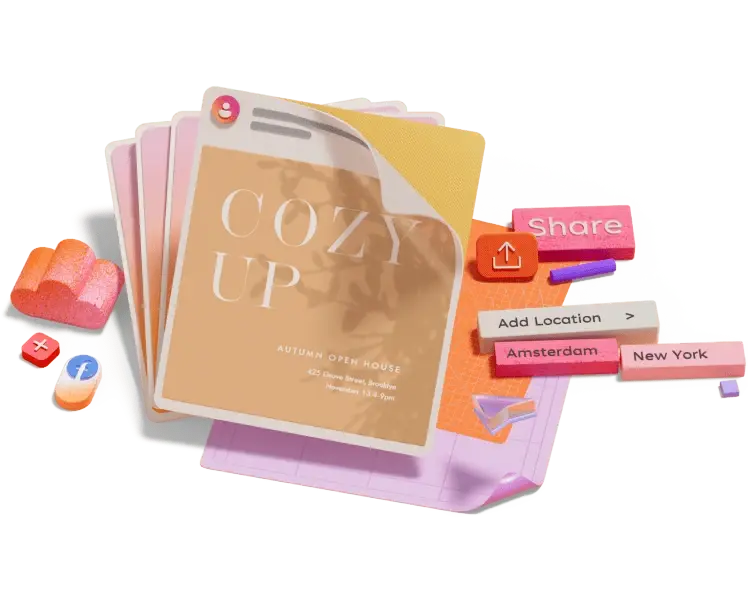
3. Share your creation with the world
How to Write a 12th Pass Resume in MS Word (Freshers & Experienced)
To say 12th pass in your resume, you should include the class, board of education of your state, year of pass, and percentage which you obtained.
There are so many jobs available to the 12th-pass students. If you can effectively include yoru education and skills in a simple and clean resume, you can get the job easily. Here you can download some of the best 12th-pass resume formats for both freshers and experienced candidates.
12th Pass Resume Format for Experienced (Format 1)

12th Pass Resume Format for Experience (Format 2)

12th Pass Resume Format for Freshers (Format 1)

Simple 12th Pass Resume Format for Freshers (Format 2)

HDFC Bank Resume Formats for Freshers & Experienced in MS Word

Simple Job Biodata formats in MS Word Free Download

Private School Teacher Job Biodatas in MS Word

Leave a Comment Cancel reply

IMAGES
VIDEO
COMMENTS
Step 3: Write an Objective or Summary. Following your title header will be your resume objective or summary. This will be a short statement between 1-5 sentences detailing your desired job title, experience, and career goals. You will want to write this statement in the Normal style.
Windows macOS Web. Go to File > New. In the search box, type Resume or Cover Letter. Double-click the template you want to use. Replace the placeholder text with your own information. Making a resume like this while you're online is quick and easy. Note: This template comes with a cover letter, so you'll have everything in one document.
Download free resume templates. Land your dream job with free, customizable resume templates. Showcase your potential to recruiters and stand out from other candidates with a professional template. Whether you're applying to corporate positions or creative roles, go with a sleek design or show your creativity with bold colors.
First, click the "More" arrow on the right-hand side of the different built-in styles. You'll see a menu with three different options. Go ahead and click "Create a Style." The "Create New Style from Formatting" window will appear. The only thing you can do here is to name the style, so click "Modify."
1 Open Microsoft Word. 2 Go to the search bar and type "resume.". Pick one of the pre-formatted resume templates that pop up. 3 Edit the filler text on the resume template with your professional information. 4 Save your document as a PDF and send it via email or submit it to an online job application form.
In this step-by-step tutorial, learn how to create a professional and eye-catching resume in Microsoft Word. In this video, I show you how to make a resume i...
Step #1: Pick a Word Resume Template. The first step in making a resume in Word is accessing its free resume templates. How you access the templates may change depending on the Microsoft Word version you're using, but what you ultimately need to do is the following: Open Word. Select one of the Resume templates Word suggests, or simply search ...
1. Pick a template for your Word document resume. Creating a resume in Word starts with choosing the right template. Open Word and search for "resume" using the search bar in the top right-hand corner. This will bring up a range of resume templates for Word. Choose "templates" and then select the one that you like best:
How to select a Microsoft Word resume template. Here's how to select a resume template in Microsoft Word: 1. Open Microsoft Word and click "File" at the top left corner of the screen. 2. Click "New" on the menu that pops up. 3. In the search bar at the top right of the screen, type in "resume". 4.
Step 3: Insert Header. Include a header with your name and contact information. Click on 'Insert,' then 'Header' to add a header to your resume. This is where you'll put your name in a larger font, followed by your contact information such as your phone number, email address, and LinkedIn profile. Keep it professional and easy to read.
Open a new document. Click on the "more templates" option. Choose "Resumes and Cover Letters.". Choose the resume template that suits you best and click on it. Click "Create.". Your chosen resume template appears as a Word document and you're ready to edit it with your personal information and experience!
Start by selecting "New" from the File menu. This displays the New Document task pane. You should then select "My Computer" from the Templates section on the left side of the task pane. Click on the "Other Documents" tab, and then select "Resume Wizard.".
Visit the Microsoft Create website and explore the resume templates. If you see one you like, select it to open it directly in Word for the web. Digital Trends. Alternatively, select Create from ...
Step 2: Choose a Word resume template. When you open Word, you'll find suggested resume templates. The first suggestions are just a few of the available options in Word. If you search for "Word resume templates," you'll find many more available to use.
1. Start with a header. This element can list your contact information, including your first and last name, email address and phone number. Depending on the template you select, this information is often bold and centered at the top of your resume. Simply add your information to the template by clicking each line and typing the required contact ...
Then delete all paragraph marks that have no accompanying text, i.e., those that are flush against your left margin. Once you've deleted all empty paragraphs, set "After" spacing to zero points for the entire document. Set "Before" to: 14 points for all section headings. 5 points for all bulleted information.
Starting with Microsoft Word is a smart move. According to Amanda Augustine, a career expert and resume writer for TopResume, files that end in ".docx" are the safest to submit to an applicant tracking system (ATS), the software that companies use to organize and analyze applications and identify the most promising candidates for a given role (often before a human is ever involved).
Resume builders offer a broad range of features that make resume creation simple. Save time and easily build effective and professional documents with help from resume making software. Easy-to-use interface Resume builders like the one offered in Word feature an intuitive interface, allowing you to quickly navigate the app, select templates ...
Step 1: Pick a Template. Start by opening Microsoft Word and searching for 'resume' in the top right search bar. You can then select 'templates' and pick one that fits your personality, job niche, and style. For example, if you are applying for a corporate accounting job, you will likely want to select a more staid template than if you ...
Use word processing software - if you have access to Microsoft Word or Google Docs, you can easily build a resume for free. Use a resume template - download a resume template for Google Docs or Word and fill out each section with your information for a professionally designed free resume.
But be careful: Not all action verbs are as strong as others. For example, words like "led" or "handled" may have their place on a resume (sparingly), but don't give the reader any details about how you did it.Did you lead by assigning work to a team; by creating a road map for a project; by organizing resources, people, and deadlines; or by doing some combination of the three?
With over 50 premium and free resume templates to help make a professional resume today, you can download one in multiple formats and customize for any job! Builder. Builder. Resume Builder. ... Microsoft Word Resume Templates. Biodata Resume Template. Don't hesitate. We have premium and free resume templates that can be used for most jobs!
To create a set of bookmarks in the PDF file, select Create bookmarks using. Then, choose Headings or, if you added bookmarks to your document, Word Bookmarks . If you want to include document properties in the PDF, make sure Document properties is selected.
Use our free tools and customizable templates to craft presentations, videos, graphics, social media designs, and much more—no design expertise required.
There are so many jobs available to the 12th-pass students. If you can effectively include yoru education and skills in a simple and clean resume, you can get the job easily. Here you can download some of the best 12th-pass resume formats for both freshers and experienced candidates. 12th Pass Resume Format for Experienced (Format 1)